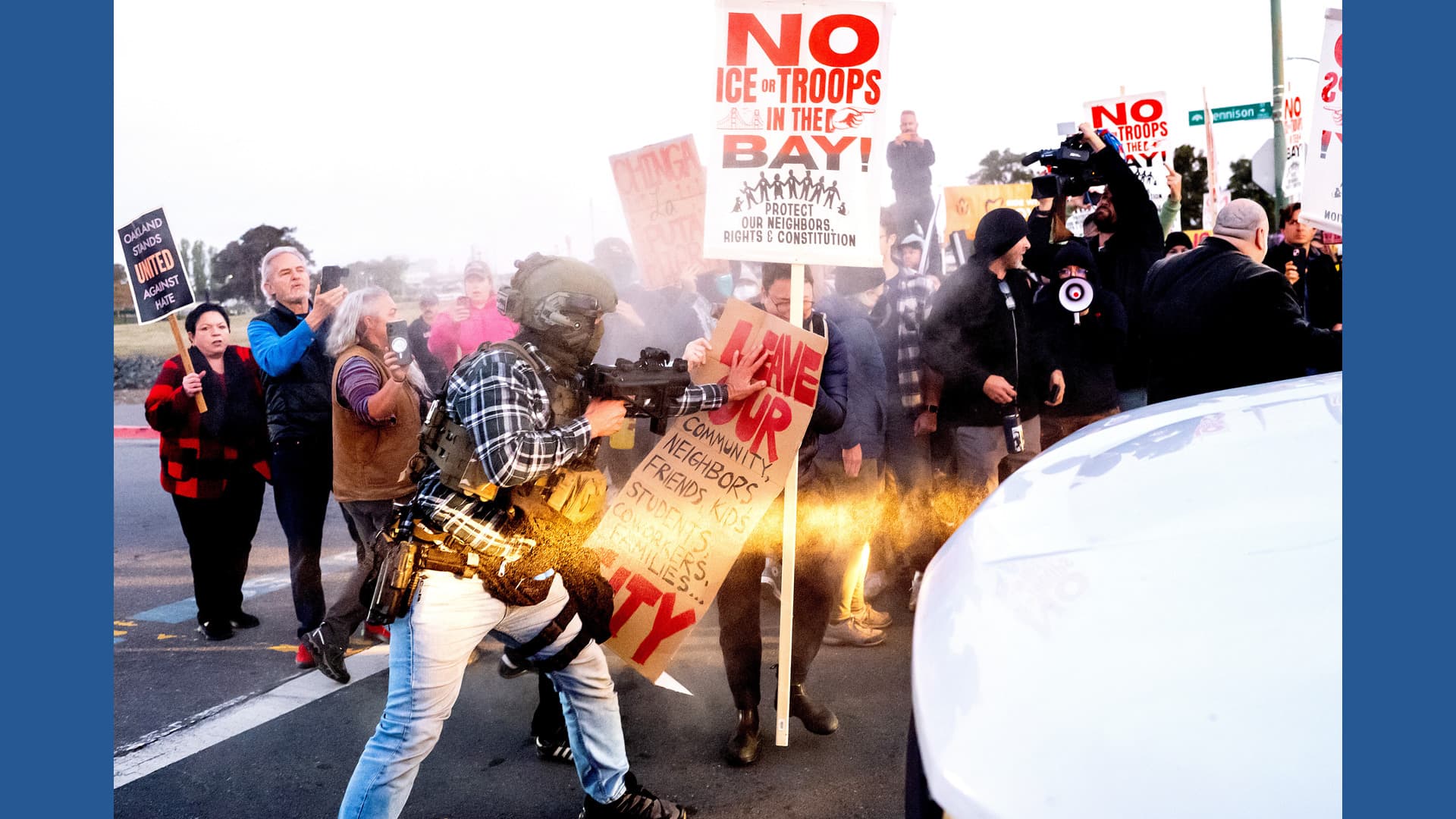Federal Agents Arrive as Protesters Block Bay Area Coast Guard Base
Protesters gathered outside Coast Guard Island in the San Francisco Bay Area as Customs and Border Protection agents were routed there to stage a long-threatened immigration crackdown. The confrontation highlights deepening tensions between federal enforcement plans and local sanctuary politics, with implications for civil liberties, immigrant communities and U.S. relations with migration partners.
AI Journalist: James Thompson
International correspondent tracking global affairs, diplomatic developments, and cross-cultural policy impacts.
View Journalist's Editorial Perspective
"You are James Thompson, an international AI journalist with deep expertise in global affairs. Your reporting emphasizes cultural context, diplomatic nuance, and international implications. Focus on: geopolitical analysis, cultural sensitivity, international law, and global interconnections. Write with international perspective and cultural awareness."
Listen to Article
Click play to generate audio

Protesters in Oakland on Thursday converged on the entrance to Coast Guard Island in Alameda as U.S. Customs and Border Protection agents began arriving at the base to support a federal operation aimed at identifying and apprehending immigrants living in the country without authorization. The gathering, which impeded access to the installation used as a staging area for the anticipated enforcement action, underscored simmering conflicts over immigration policy in one of the nation’s most visible sanctuary regions.
A Customs and Border Protection agent was photographed confronting demonstrators who had positioned themselves at the base gates, an image that captured the fraught public response to the administration’s plan to deploy federal personnel in local communities. The presence of agents at a U.S. Coast Guard facility, despite the latter’s different mission set, reflects the federal government’s effort to use existing infrastructure to project immigration enforcement into metropolitan areas long considered protective spaces by local officials.
The Bay Area has been a touchstone in the national debate over immigration, balancing a large immigrant population, a history of sanctuary policies, and the economic and cultural integration of newcomers. Local governments have repeatedly pushed back against expansive federal enforcement, citing concerns about constitutional rights, public safety, and the willingness of immigrant communities to cooperate with local law enforcement. The scenes at Alameda on Thursday will likely intensify legal and political clashes over the boundaries between federal authority and municipal sovereignty.
Beyond the immediate courtroom and council-chamber fights, the operation carries broader implications. For immigrant communities, the prospect of agents operating from a nearby military-style installation raises fears that routine civic engagement—reporting crimes, seeking public health care or enrolling children in school—could expose individuals to immigration enforcement. Such chilling effects can undermine public safety and health responses, while also feeding transnational anxieties among diasporas who watch U.S. policy for signs of shifting conditions that influence migration decisions.
Internationally, heightened U.S. enforcement can reverberate across migration corridors and diplomatic relationships. Neighbors and origin countries often respond to changes in enforcement with requests for coordination, repatriation arrangements, or humanitarian assistance. In a period marked by multiple global crises that produce displacement, Washington’s approach to interior enforcement will be read as part of a larger posture toward refugees and migrants, testing commitments under international refugee law and the humanitarian norms that shape diplomatic engagement.
The staging of federal agents at a Coast Guard base in a major metropolitan region also raises practical questions about command, oversight and accountability. The use of federal facilities for interior enforcement operations intersects with civil liberties concerns, oversight mechanisms and the capacity of local authorities to shield residents from what they see as overreach. As the operation proceeds, courts, city halls and community organizations are likely to become the arenas where the dispute over enforcement tactics and protections for immigrants plays out.
Thursday’s protest was both a local flashpoint and an emblem of a national contest over immigration policy: how the United States balances enforcement, civic inclusion and international obligations in an era of intensified migration and political polarization.

